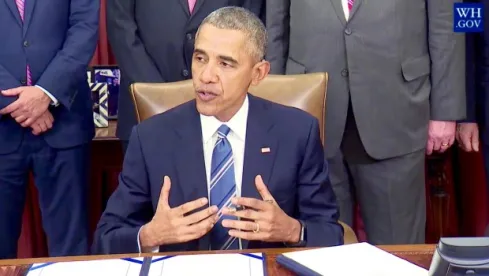In September 2015, we notified you of President Obama’s Executive Order 13706 directing the Department of Labor (DOL) to issue regulations requiring certain federal contractors to provide approximately seven days per year of paid sick leave to their employees. The proposed regulations were issued by the DOL on February 25, 2016.
The federal government is not alone in its quest to demand that private employers provide paid sick leave for their employees. As noted in our recent alert, a growing number of cities and states are adopting paid sick leave laws.
But, before diving into the substantive requirements of the DOL’s proposed rule, you should first make sure the law applies to you. This proposed regulation is much more limited in scope than its title “Establishing Paid Sick Leave for Federal Contractors” implies.
Which contractors are covered by the proposal?
The proposal applies to any new federal contract, provided that it is a:
(i) Procurement contract for construction covered by the Davis-Bacon Act (i.e. public works, prevailing wage)
(ii) Contract for services covered by the Service Contract Act
(iii) Contract for concessions (e.g. operating public utility)
(iv) Contract in connection with Federal property or lands and related to offering services for Federal employees, their dependents, or the general public.
Even if covered by the above, additional exclusions would apply. For example, the sick leave accrual requirements do not apply to employees who perform work duties necessary to the performance of the contract but are not directly engaged in performing the specific work called for by the contract, who spend less than 20 percent of their hours worked in a particular workweek performing in connection with such contracts.
Similar to President Obama’s February 12, 2014, Executive Order and implementing regulations establishing a minimum wage for federal contractors, the proposed Paid Sick Leave for Federal Contractors does not apply to supply only contractors. For those companies supplying parts, widgets and gadgets only, the proposed rule would not apply.
For those who must comply, what are the requirements?
Under the proposal, employees will accrue not less than one hour of paid sick leave for every 30 hours “worked” on or in connection with a covered contract. However, a contractor must accurately retain records of the hours spent on covered contracts if it wants to exclude non-covered work from the accrual calculation. The proposal allows for estimation for exempt employees working full- or part-time on covered contracts. The contractor must calculate accrued leave on a weekly basis and inform the employee of the amount of paid sick leave available no less than monthly, but also at other specified points, such as upon request to take paid sick leave.
While paid sick leave is carried over from one accrual year to the next, the contractor may limit the amount of paid sick leave the employee has available for use at any point to 56 hours.
In lieu of accruing, contractors may choose to provide an employee with 56 hours of paid sick leave at the beginning of each accrual year, but using this method, the contractor must allow the employee to carry over no less than 56 hours to the following year and must not restrict how much is available for use.
Unless required by state law, collective bargaining agreement or other contract, contractors are not required to pay out unused paid sick leave upon separation of employment.
The executive order also requires that paid sick leave can be taken for an absence: (i) due to a physical or mental illness, injury or medical condition; (ii) to obtain care, diagnosis or preventative care from a health care provider; (iii) to care for a child, domestic partner, parent, spouse or other individual related by blood or affinity which is equivalent to a family relationship; or (iv) to obtain counseling, seek relocation, obtain other assistance from victim services or take legal action for domestic violence, sexual assault or stalking.
Under the proposed rule, paid sick leave can be used to care for a larger group of individuals than those for whom Family and Medical Leave Act (FMLA) leave can be taken. For example, leave to care for a child may be taken regardless of the child’s age. Leave is also available for domestic partners, defined as those in “a committed relationship with another adult.” “Family relationship” is defined as a relationship with any person with whom an employee has a significant personal bond—regardless of biological or legal relationships—including a fiancé, cousin or close friend.
“Physical or mental illness, injury, or medical condition” includes any medical condition, regardless of whether it requires attention from a health care provider or whether it would be a “serious health condition” under the FMLA. Examples cited by the DOL include a common cold, ear infection, upset stomach, ulcer, flu, headache, migraine, sprained ankle, broken arm or depressive episode.
Many of the remaining details, such as required notice and certifications are substantially the same, with a few expansions to those set forth in the Executive Order, which we described in an earlier client alert.
The Administration’s goal with this proposed rule is to improve the health and performance of employees of federal contractors and to bring benefits packages offered by federal contractors in line with model employers, ensuring they remain competitive in the search for dedicated and talented employees. In turn, the Administration expects the measure to result in savings and quality improvements in the work performed by parties who contract with the federal government that will in turn lead to improved economy and efficiency in government procurement. Of course, this is what the Administration must show to have the authority to promulgate such a rule under The Procurement Act. Whether it will hold up if challenged (presuming these regulations become final) is another question.





 />i
/>i

